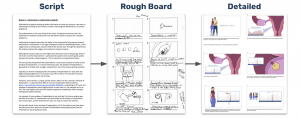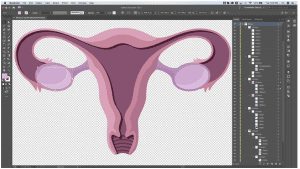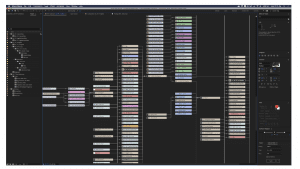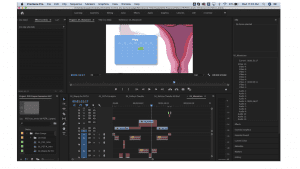How a Video Comes to Life
The data is clear — video is the most effective way to educate people on complex topics. At EngagedMD, we’ve spent the past 6 years and have invested millions of dollars into building fertility video content. As more practices look to improve their patient education and experience, we’ve decided to open source our process so that you can avoid the bumps and bruises we’ve learned in our journey! Enjoy this abbreviated guide to creating premium educational content.
Key Resources for the Project
- Education committee: Responsible for scope, accuracy, and review of content. Typically includes multiple doctors, nurses, and industry specialists to ensure well-rounded content and make thoughtful, yet expedient decisions (there will be many!).
- Medical screenwriter: Responsible for initial scripting and ongoing edits
- Script supervisor: Responsible for ensuring continuity of the production throughout the entire script
- Director and/or producer: acts as overall manager of production of content
- Illustrator: Illustrates scenes and individual assets
- Motion graphics animator: transforms digital assets into animations
- Editor: Responsible for organizing final footage and audio into post production
- Film crew:
- Director of photography: responsible for both the artistic and technical details involved when filming/animating
- Camera operators: person physically operating camera. For most shoots, you’ll require two operators and their assistants
- Grips: technician responsible for building and maintaining camera and lighting set-ups. They assemble and build the dollies, tracks, cranes, and other equipment needed to film a shot
- Gaffer: lead technician responsible for all lighting
- Boom operator: responsible for all sound equipment, including booms and mics if performing live sound
- Actors and voiceover artists: must be sourced and trained based on scripting needs
Step 1 – Discovery and Scripting
Properly completing the discovery and scripting phase of the project is foundational to an exceptional end product. Don’t skip steps here, or you’ll find yourself returning to this phase after a very expensive and time consuming journey.
MINIMUM RESOURCES INVOLVED:
- Patient education committee (typically a mix of nurses, doctors, coordinators, administrators, marketing team, and anyone else who may touch the patient experience)
- Medical screenwriter
Establish goals
Bring together your committee to identify exactly what goals you have for this content. Topics to discuss include where and how this content will be provided to patients, tone of voice, length, style guidelines, type of content (live shoot, animation, narrated presentation, 3D, etc.), translations, shelf life of content, etc. Ultimately, with any learning program, you should be attempting to balance cognitive load, engagement/affective domain, and active learning for optimal results.
Create an outline
Identify the team that will be responsible for the accuracy and comprehensiveness of the information held within the videos. Typically, this includes some mixture of medical staff (doctors, nurses, and administrators). Create an outline describing the flow of the video and information to be covered. Bring all of your stakeholders back together at the end of this phase for review/approval.
Scripting
Time to hire a screenwriter! How things are written on paper pamphlets does not translate well to how a viewer absorbs information through video. Hire a professional to ensure you’re accomplishing your goals as initially outlined. A few principles to keep in mind as you script that will carry through video production:
- Signaling: Use of on-screen text or symbols to highlight important information. Examples include the appearance of one to three key words, change in color or contrast, or a symbol that draws attention to a region of a screen.
- Segmenting: Chunking of information to manage intrinsic load. Keep chunks of content less than 6 minutes and provide the end user control over the flow of new information by using chapters or natural divisions to maintain engagement.
- Weeding: Elimination of interesting, but extraneous information. This is such a common pitfall as there’s a plethora of interesting information that you COULD convey, but probably don’t NEED to.
- Matching modality: Video allows you to combine audio/verbal with visual/pictorial to convey new information. In your content, you should avoid “talking heads” (only stimulates auditory/verbal channel) and minimize the combination of text and pictures together (only stimulates visual channel).
Once again, bring all of your stakeholders back together at the end of this stage for review/approval to ensure your foundation is sound.
Step 2: Storyboarding
MINIMUM RESOURCES INVOLVED:
- Patient education committee
- Director and/or producer – acts as overall manager of production of content
- Illustrator – Will help illustrate scenes and prepare for asset creation
- Motion graphics animator – ensures feasibility of storyboards for animation
- Editor – Responsible for organizing final footage
At this stage, you’re taking the script and converting it into a visual story. Our team uses storyboards to demonstrate how we’ll be telling the story to ensure cohesiveness/feasibility before fully committing to a film shoot or animation work. Each line of script is converted to a rough “board” that displays exactly what will be occurring in each individual scene. Our patient education committee, illustrators, and animators work together to brainstorm how we can best visualize what we want to convey. We ensure that we have clear visual guidelines for consistency, identify exactly how each scene will connect to the next, and illustrate every single item that will eventually be produced. This will help guide the production team during a live video shoot and throughout animation.
Here’s an example of what this looks like in practice:
Step 3: Production
MINIMUM RESOURCES INVOLVED:
- Patient education committee
- Director and/or producer – acts as overall manager of production of content
- Illustrator – creates all digital assets
- Motion graphics animator – transforms digital assets into animations
- Editor – Responsible for organizing final footage and audio into post production
- Script supervisor – responsible for ensuring continuity of the production throughout the entire script
- Film crew:
- Director of photography – responsible for both the artistic and technical details involved when filming/animating
- Camera operator – person physically operating camera. For most shoots, you’ll require two operators and their assistants
- Grips – technician responsible for building and maintaining camera and lighting set-ups. They assemble and build the dollies, tracks, cranes, and other equipment needed to film a shot
- Gaffer – lead technician responsible for all lighting
- Boom operator – responsible for all sound equipment, including booms and mics
- Actors and voiceover artists – must be sourced and trained based on scripting needs
This is the most challenging, expensive, and time consuming part of the video creation process. The goal is to combine a voiceover with live video and motion graphics to create a seamless video. Your best bet is to hire an agency to manage all aspects of this, but you will be required to provide the right direction and inputs to get the end product desired.
Start by auditioning and hiring your voiceover artist. This person will be the soul of your entire production, so make sure that the tone fits your goals. You’ll likely need to get scratch recordings and many patches done, so vet the talent accordingly.
Your storyboard will dictate what needs to be filmed live and animated.
For a live film shoot, plan your scenes, scout your locations, hire your crew, equipment, and actors, and perform practice runs as needed to feel confident and prepared. Once you have your crew on site, every hour of time will run you thousands of dollars.
Creating motion graphics is detail oriented and complex.. Start by identifying the different assets that will be needed for animation. Our illustrators use Adobe Illustrator (AI) to digitally create each individual shape layer that is combined into an asset. For example, the uterus shown below is made up of 36 unique shape layers that have been digitally composed. The yellow outline on the ovary is one shape.
Each individual shape is then brought into Adobe After Effects for animation. Each shape will be programmed to change form over time (size, opacity, position, acceleration rate, etc) in order to make the assets move together in harmony. This will all be carefully coordinated to match your voiceover artist and create a pleasing end result. Rinse and repeat for each asset in each individual scene.
Step 4: Post Production
MINIMUM RESOURCES INVOLVED:
- Patient education committee
- Director and/or producer – acts as overall manager of production of content
- Motion graphics animator – transforms digital assets into animations
- Editor – Responsible for organizing final footage and audio into post production
- Script supervisor – responsible for ensuring continuity of the production throughout the entire script
Once you have all of your individual scenes completed, the team will go heads down into post-production. Our team uses Adobe Premiere Pro to create final exports that are ready for consumption. Each individual scene and animation is brought into this program to finalize timing, transitions, and sound into a final render.
After the videos export, you can begin showing to stakeholders for medical and style review/approval. It’s inevitable to find things that don’t come out as expected, or are just plain errors at this stage of review. Typical examples include the way a sentence is phrased, the lighting in a scene, the way an asset looks or is animated, or just a simple mispronunciation. Unfortunately, this requires going back to that step in the process to remediate.
Last, but not least, plan for the future. You will have to make changes to the scenes in your content, whether it’s updates in technology/protocols (imagine if we changed the name of PGS to PGT-A!), change in personnel, translations, or just having a modern look. Any time that you have a human speaking on camera, accept that you will never be able to change this portion of content without re-filming any scene that person is in throughout the entire production (trust us, the viewer will start paying more attention to changes in hair style than the information that matters). Plan to store and manage all of your source files, and build good relationships with all members of the production team that created these files for when you need to make changes.





